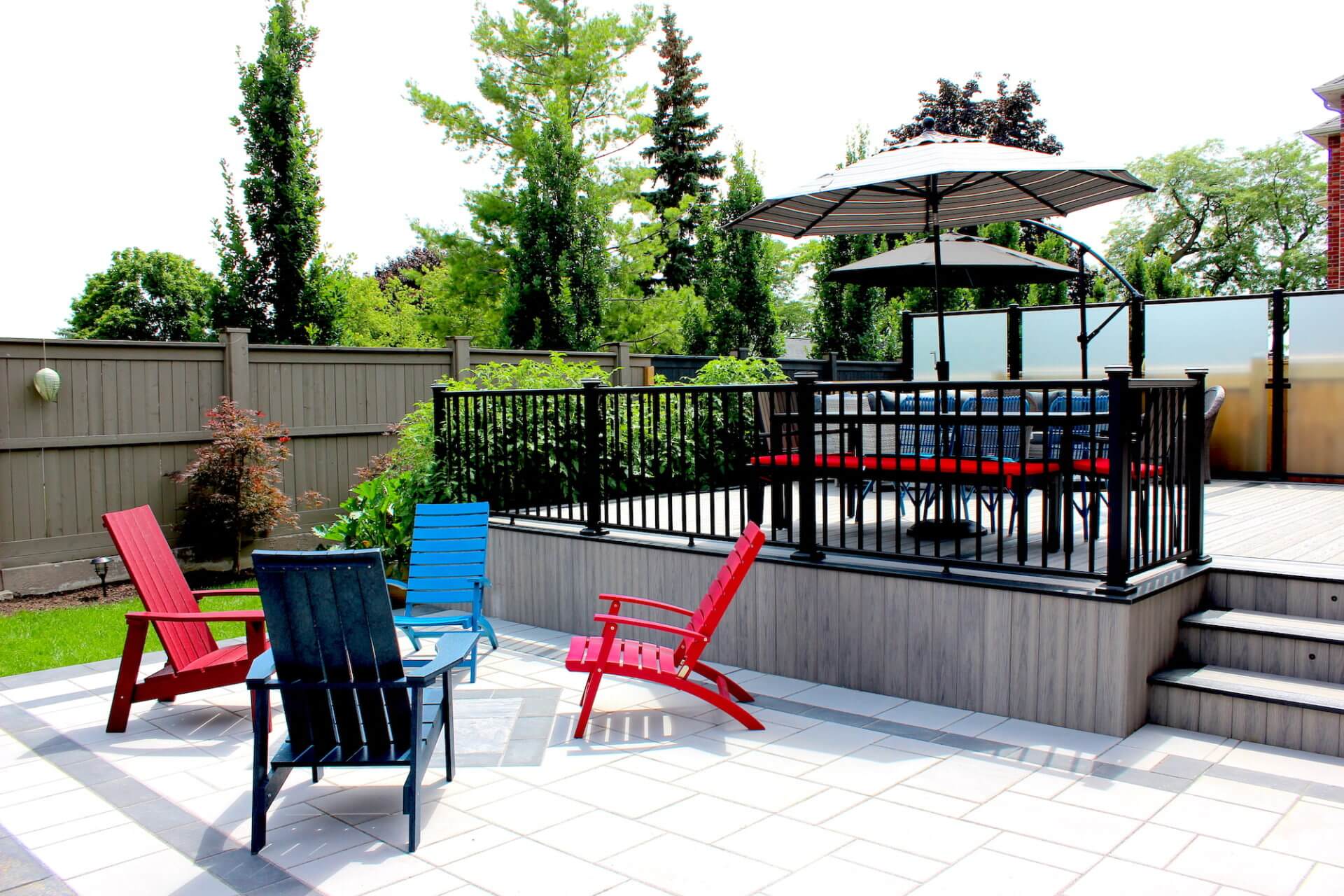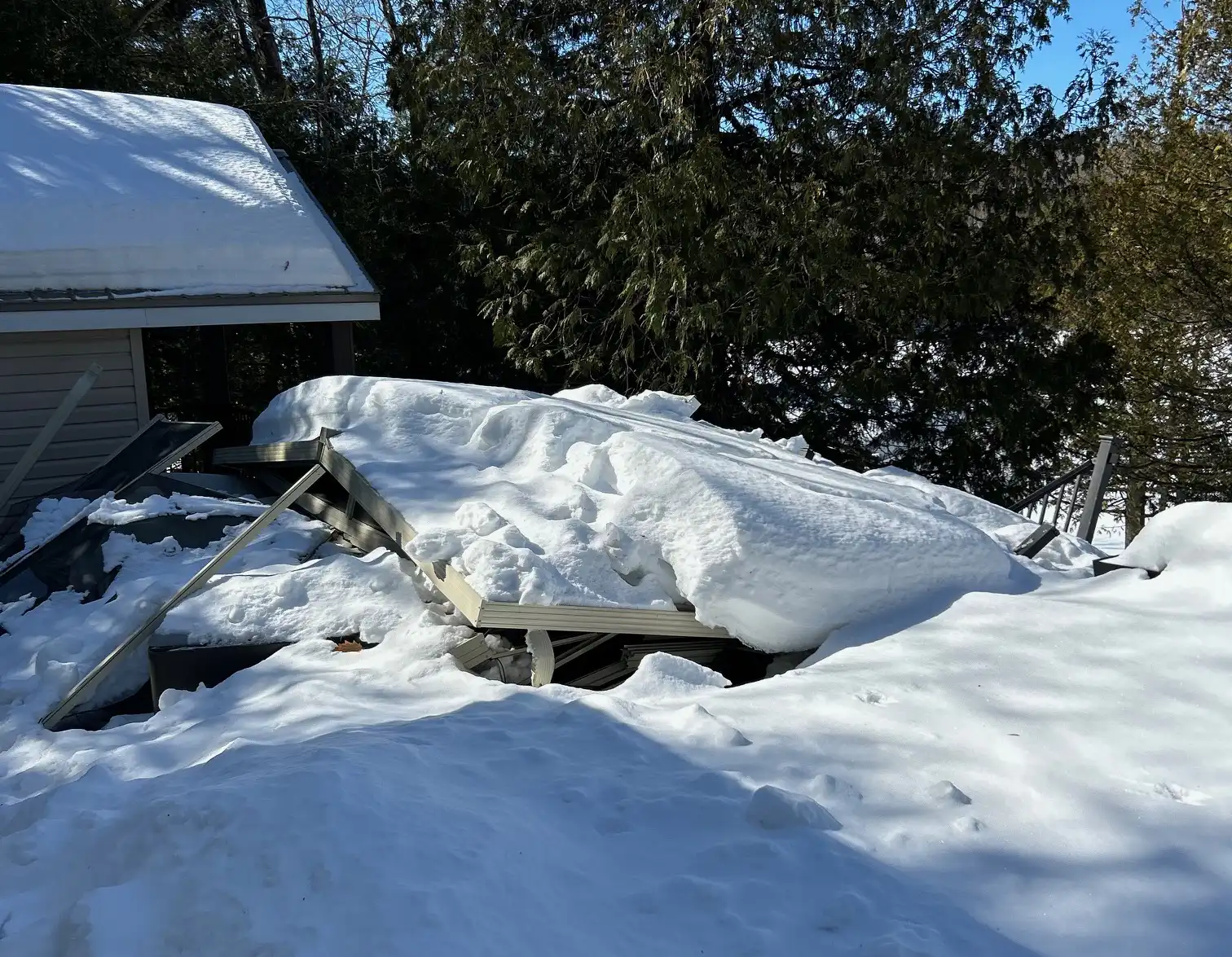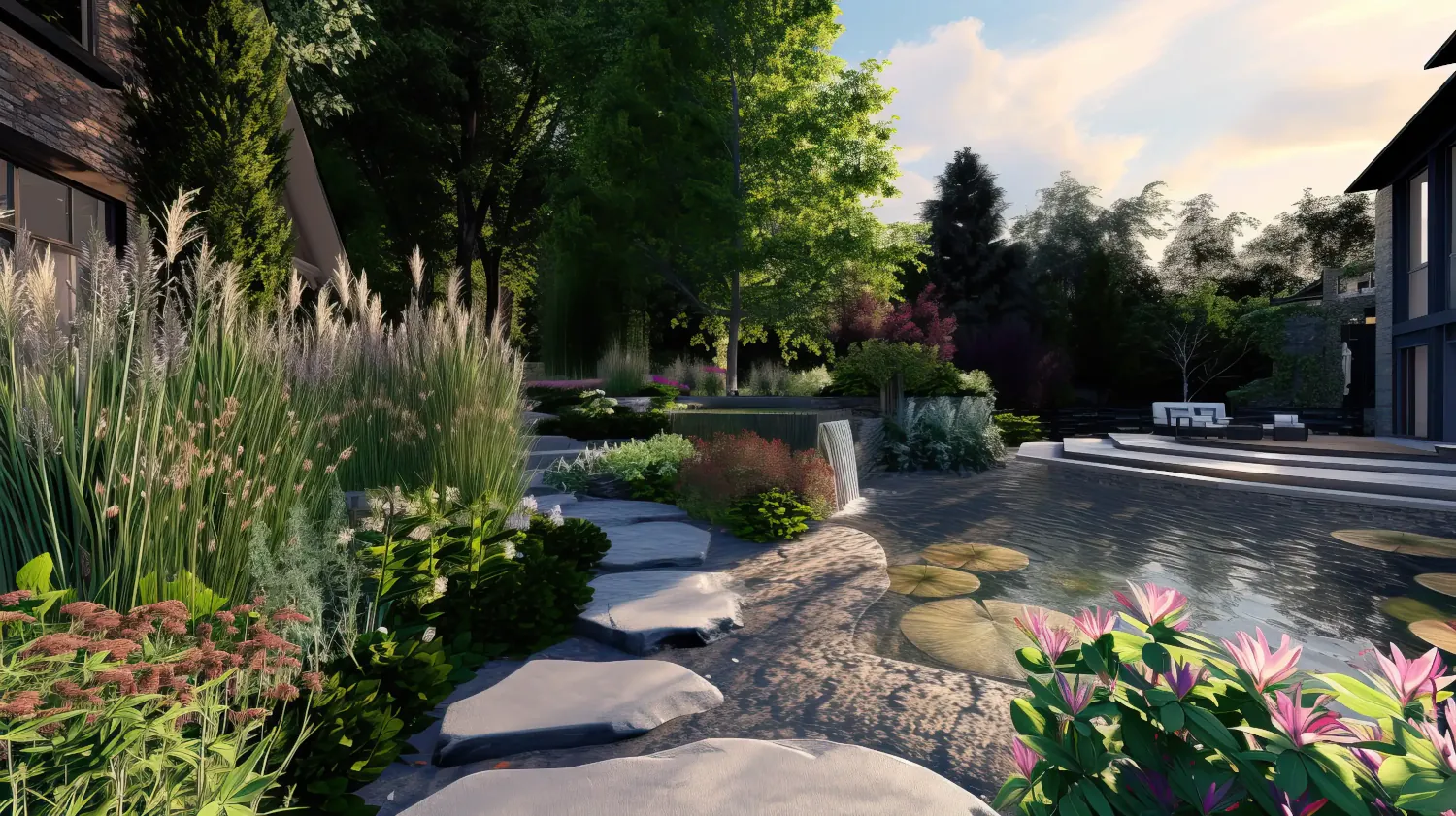Introduction
For residents in the Greater Toronto Area, a townhouse deck is often the only private outdoor sanctuary available. When it comes time for a townhouse deck replacement GTA homeowners face more than a simple renovation; it’s a significant investment in lifestyle and property value. However, the path is layered with unique complexities, from condo board politics to municipal red tape. Many homeowners feel overwhelmed, facing a “dual-approval gauntlet” that can lead to wasted money and legal headaches if navigated improperly. This guide demystifies the entire process, providing a clear blueprint for a successful townhouse deck replacement, transforming a potential source of stress into a valuable and enjoyable home improvement.
Key Takeaways
- Securing written approval from your Condominium Corporation is the mandatory first step, before you spend any money on professional designs for a municipal permit.
- Low-maintenance materials like PVC and composite decking, while having a higher upfront cost, offer superior long-term value and durability in the Ontario climate compared to traditional wood.
- A building permit is not optional for most deck replacements in the GTA; building without one can lead to fines, stop-work orders, and forced removal.
- A professional, experienced contractor will provide a WSIB clearance certificate, proof of liability insurance, and a detailed contract that protects both parties.
- A new, professionally built, and fully permitted deck can significantly increase your home’s value in the competitive GTA market, often providing a return on investment that exceeds national averages.
What is the First Step in a Townhouse Deck Replacement?
The most critical phase of a townhouse deck replacement happens before any construction begins. The unshakeable rule is that securing approval from your Condominium Corporation is the mandatory first step. A common and costly mistake is commissioning expensive architectural or engineering drawings for a city permit before getting the condo board’s blessing. The board operates under its own governing documents—the Declaration, By-laws, and Rules—which can impose aesthetic and material restrictions completely separate from the Ontario Building Code. A perfectly safe and code-compliant design can be rejected simply because it uses a non-approved decking colour or railing style.
To begin, you must submit a formal written request to your Board of Directors, usually through the property manager. This application should be as detailed as possible and include:
- A clear description of the proposed work.
- Sketches or preliminary design concepts with dimensions.
- A list of proposed materials, including brand and colour (e.g., Trex composite decking).
- Information on your proposed contractor.
- An estimated project timeline.
Once the board grants preliminary approval, you will likely be required to enter into a Section 98 Agreement. This is a legally binding contract that transfers all future responsibility for the maintenance, repair, and insurance of the altered deck from the corporation to you as the unit owner. This agreement is tied to the unit and automatically passes to the next owner when you sell, making it a critical document for your property’s legal and financial standing.
How Do I Get a Municipal Building Permit in the GTA?
After securing written approval from your condo corporation, the next hurdle is the municipal building permit. This is a legal requirement under Ontario’s Building Code Act. In most GTA municipalities, a permit is required if your deck is over 60 cm (24 inches) high, larger than 10 square metres (108 sq. ft.), or attached to the house. Attempting to build without a permit can lead to stop-work orders, fines, or even a demolition order.
While the Ontario Building Code is uniform, the permit process varies by municipality. The Municipality cannot issue a permit until the project complies with all ‘applicable laws,’ including local zoning by-laws, Conservation Authority regulations (like TRCA or CVC), and heritage designations. It is crucial to check these local rules before finalizing your deck design. For example, Mississauga’s zoning by-law may limit how far a deck can encroach into the rear yard, while Oakville’s process emphasizes getting zoning and conservation approvals before you even apply for the building permit.
A complete application package typically requires:
- The main application form.
- A “Schedule 1: Designer Information” form completed by a qualified designer with a BCIN.
- Detailed, scaled drawings including a site plan, framing plan, and structural details.
- Forms specific to the municipality, such as a Tree Declaration Form in Toronto.
Most GTA municipalities, including Toronto, Mississauga, Brampton, and Oakville, now use online portals for digital application submissions.
What Are the Best Decking Materials for the Ontario Climate?
Choosing the right decking material is a major decision that impacts your budget, maintenance workload, and the deck’s longevity. It’s best to consider the “Total Cost of Ownership” rather than just the upfront price. Low-cost materials like pressure-treated wood require significant annual maintenance, which adds up in cost and effort over time. In contrast, low-maintenance options like composite and PVC decking offer better long-term value.
| Material | Avg. Installed Cost/sq. ft. (GTA) | Lifespan (Ontario Climate) | Annual Maintenance | Pros | Cons |
| Pressure-Treated (PT) Pine | $40-70 | 15-20 years | Annual cleaning; sealing/staining every 1-3 years. | Lowest upfront cost; widely available. | High maintenance; prone to warping, cracking, and splintering. |
| Cedar | $60 – $80 | 15-20 years | Annual cleaning; sealing/staining every 2-3 years to maintain colour. | Beautiful natural appearance; naturally resistant to rot. | Softer wood can dent; requires maintenance to prevent greying. |
| Composite (WPC) | $75 – $90 | 25-30+ years | Regular cleaning with soap and water. | Very low maintenance; durable; won’t rot or splinter; eco-friendly. | Higher upfront cost; can get hot in direct sun. |
| PVC (All-Plastic) | $80 – $100 | 30-50+ years | Regular cleaning with soap and water. | Highest durability and moisture resistance; very low maintenance. | Highest upfront cost; some find the appearance “plastic-like”. |

The Deck Store specializes in and prefers to install low-maintenance PVC decking for its superior durability and performance. Brands like TIVA, Wolf, Zuri, Clubhouse, TimberTech, Azek, and Trex offer extensive warranties and a premium, lasting finish ideal for the demanding Southern Ontario climate.
What Should I Expect During the Deck Construction Process?
Once approvals are in place and a professional contractor is hired, the physical project begins. The process is methodical to ensure safety and quality control at every stage.
First, the old deck is safely demolished. A professional crew will dismantle the railings and deck boards first, followed by the stairs and frame. The final step is removing the ledger board from the house wall and extracting the old footings. All debris should be disposed of responsibly in a rented construction bin.
Next comes the build. The process typically follows these steps:
- Foundation: New concrete footings are laid. In Ontario, these must extend below the frost line, typically 36 to 48 inches deep, to prevent heaving.
- Framing: A skilled builder constructs the substructure. This includes attaching a ledger board to the house with proper bolts and flashing, setting support posts, and installing beams and joists. Some modern builds may use steel framing for superior stability and longevity. Helical pile footings are another professional-grade option to ensure the deck remains permanently level.
- Decking and Railings: The new decking boards are installed, followed by the complete railing system.
- Inspections: Throughout the build, the project must pass mandatory municipal inspections. This typically includes a footing inspection (before concrete is poured), a framing inspection, and a final inspection upon completion. It is the responsibility of the permit holder to schedule these inspections.
A professional firm like The Deck Store uses experienced craftsmen and project managers to ensure every stage is treated with care and built to exceed Ontario Building Code standards.

FAQ
Do I need a permit to replace my old townhouse deck?
Almost certainly, yes.
In the GTA, a building permit is typically required if the deck is attached to the house, over 60 cm (24 inches) above ground, or larger than 10 square metres (108 sq. ft.). It’s always best to check with your local municipality.
What is a Section 98 Agreement?
A Section 98 Agreement is a legal contract between a unit owner and a condo corporation required for alterations to common elements, like a deck. It formally transfers all future responsibility for the deck’s maintenance, repair, and insurance to the current and subsequent unit owners.
How long does a townhouse deck replacement take?
The timeline varies, but once deck construction starts, an average-sized deck can be built by a professional crew in about a week, weather permitting. The planning, approval, and permit stages can take several weeks or even months, so it is important to start the process well in advance.
Can I use a BBQ on my townhouse deck?
This depends on your condo corporation’s rules and local fire codes. Many corporations have specific by-laws regarding the use and storage of barbecues on decks and balconies for safety reasons. Always check your governing documents first.
Conclusion
Replacing a deck on a GTA townhouse is a complex but highly rewarding project. Success hinges on a clear understanding of the “dual-approval” process—first with your condo corporation, then with the municipality. By prioritizing this sequence, choosing durable, low-maintenance materials suited for the Ontario climate, and hiring a reputable, insured, and WSIB-cleared contractor, you can avoid common pitfalls. A professionally managed project not only results in a beautiful and safe outdoor oasis for you to enjoy but also represents a significant, strategic investment that enhances the value and appeal of your home in a competitive market.
For professional services in the GTA, contact The Deck Store today.




